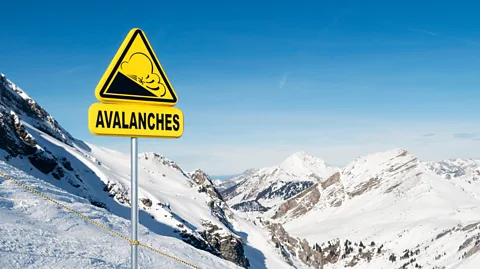What happens to a mountainside after an avalanche?
 Getty Images
Getty ImagesThe destructive force of an avalanche can change a mountainside profoundly. Can we harness this power without compromising human safety?
For anyone who has traversed snowy mountain slopes, the pervasive risk of an avalanche will never be far from your mind. Each year, around 100 people lose their lives in snow avalanches in Europe alone, while avalanches kill an average of 24 people each year in the US. Safely managing avalanches is a constant challenge in mountainous regions all around the world.
The destructive force of an avalanche also has a profound impact on the biodiversity in the mountains. Research by Karel Cerny, an Innsbruck-based zoologist and entomologist, and colleagues in North Tyrol, Austria, has shown that natural avalanche tracks – the most common paths that avalanches take down a mountainside – are particularly rich in butterfly species. In the Alps, "the best tracks are on the sunny, against [south-facing] slopes," says Cerny.
Separate research from Switzerland shows that avalanche tracks are also richer in plant diversity, compared to undisturbed areas.
Cerny has investigated whether there is a way to manage avalanches better to retain these benefits for nature, without compromising on human safety.
You may also want to read:
The biodiversity influence of avalanches comes from the natural corridors free of bushes and trees they create as they thunder down a mountainside. These become species-rich grasslands or meadows in themselves, but also, vitally, connect different habitats up and down the mountain. This can be crucial for species such as butterflies, who benefit from the cleared vegetation in the nutrient-poor soils of the Alps. (Read more about why the Alps are a haven for rare butterflies.)
Carbon Count
The emissions from travel it took to report this story were 0kg CO2. The digital emissions from this story are an estimated 1.2g to 3.6g CO2 per page view. Find out more about how we calculated this figure here.
Protecting human safety is a non-negotiable part of life in the Alps, as in mountains elsewhere. But certain effective avalanche interventions could have more benefits for wildlife than others. In many regions, snow bridges, or barriers that aim to stop avalanches altogether, are commonplace. "The classic snow bridges are suboptimal," says Cerny. "The biodiversity of plants and animals collapses soon among the barriers."
Cerny has suggested guiding avalanches down safe routes to maintain at least some of their ecological benefits. "The best possibility is the building of galleries and sometimes it is possible to turn the avalanches using dams," says Cerny.
It's not a question of pitting biodiversity against human safety, Cerny notes – instead, the answer lies in seeking solutions that could benefit biodiversity too.
--
